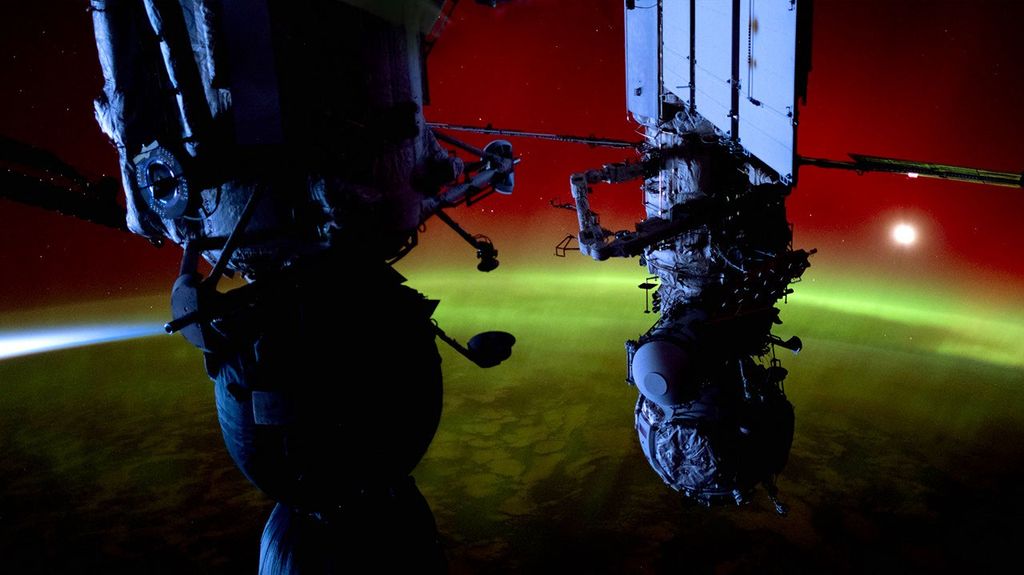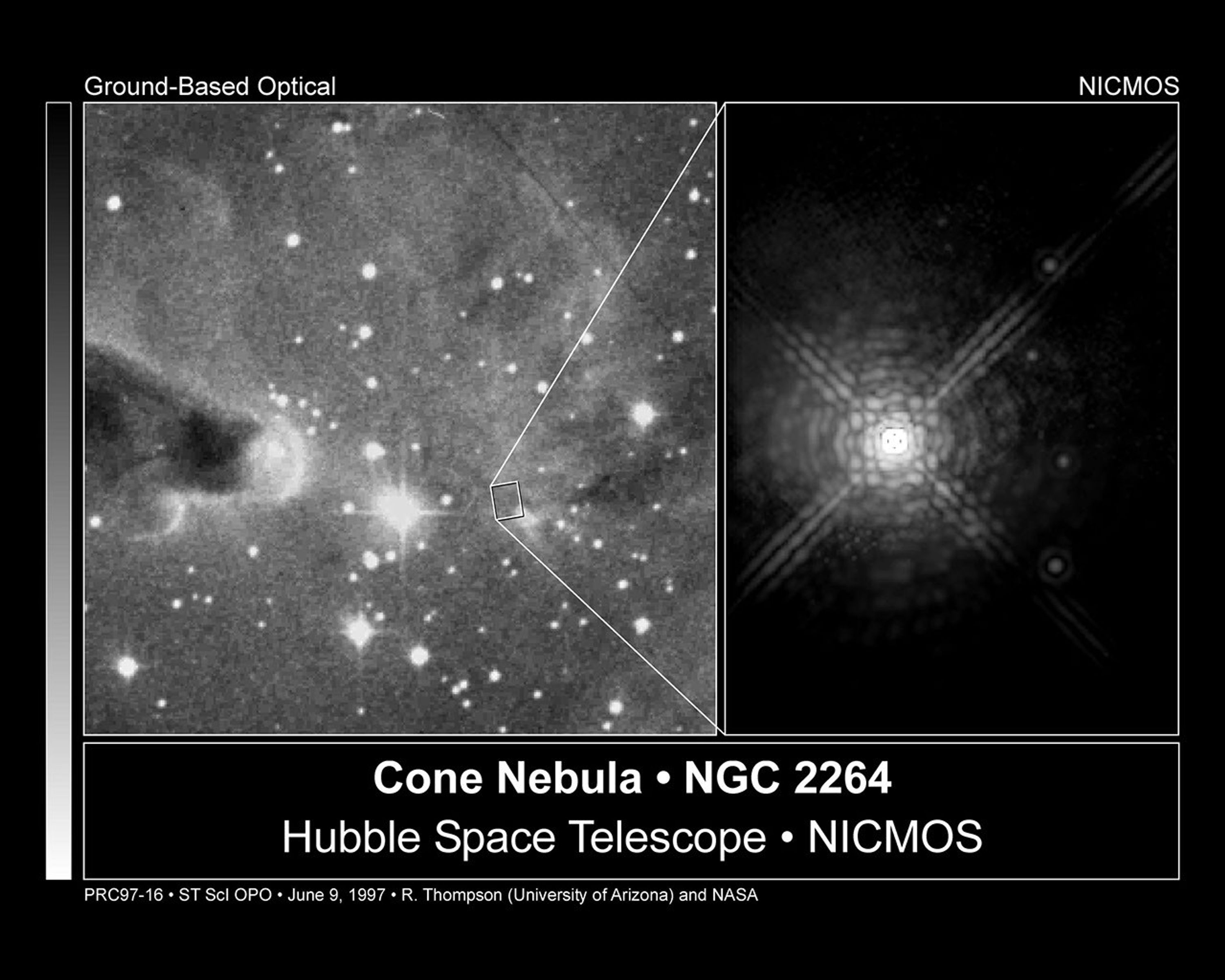BACKGROUND INFORMATION: HUBBLE TAKES A UNIQUE STELLAR "FAMILY PORTRAIT"
Hubble Space Telescope's Near Infrared Camera and Multi-Object Spectrometer (NICMOS) has provided a stellar "family portrait" of a young family of stars in the Cone Nebula, located in constellation Monoceros. The proud parent is the brilliant massive star NGC 2264 IRS, also known as Allen's Source (named after its original discoverer, who identified it in 1972). The star is 2,000 times brighter than our Sun and is the fountainhead of an outflow that dominates the entire region of glowing gas called the Cone Nebula.
Peering through the dust in the Cone Nebula with infrared eyes, Hubble Space Telescope's NICMOS has provided a striking direct example of shock-induced star formation, where a gale of high speed particles from a young massive star compresses dust and gas until it is dense enough to trigger the formation of six much smaller and fainter Sun-like stars around it.
Though the six smaller stars are very close to their brilliant "parent" – only .04 to .08 light-years away – NICMOS clearly resolves them as pinpoint stars.
"The NICMOS observations conclusively show that the surrounding objects are stellar and not enhancements in the nebulosity in the region. It also shows the ability of NICMOS to detect faint objects near very bright ones," says NICMOS principal investigator Rodger Thompson of the University of Arizona.
The young stars lie along an invisible "perimeter" or wall where outflowing gas has crashed into the wall of a molecular cloud, compressing the gas like snow being pushed by a plow.
"The outflow from Allen's source increased the density in the nearby region causing the formation of the new stars hence the "triggered" star formation. This may be the best example of such a phenomena that has been discussed theoretically for many years. The creation of six objects indicates that this is not simply binary formation where two or perhaps three objects form naturally out of the same protostellar cloud," says Thompson.
This star is also thought to be the origin of the outflow that creates the Cone Nebula, a striking stalagmite looking feature of cold molecular hydrogen and dust, because it is at the apex of the projected edges of the Cone Nebula and is the brightest known source in the region.
Further work is underway to test the validity of this scenario of "triggered" star formation in this system.
































